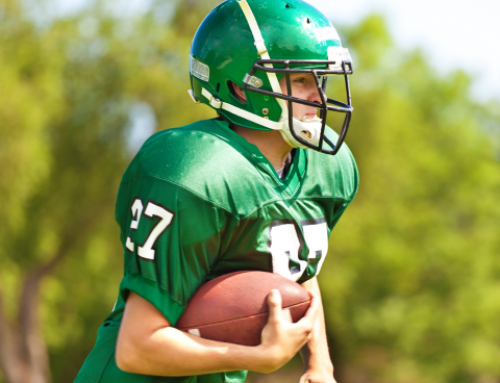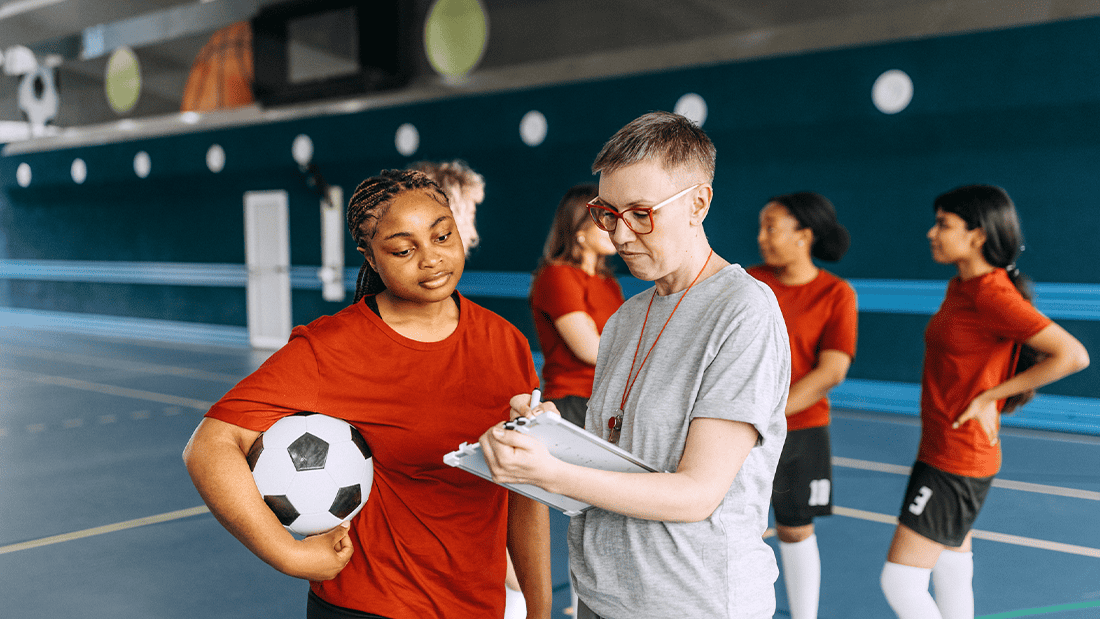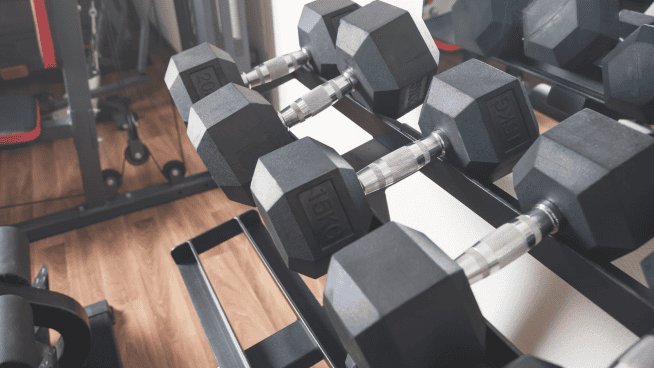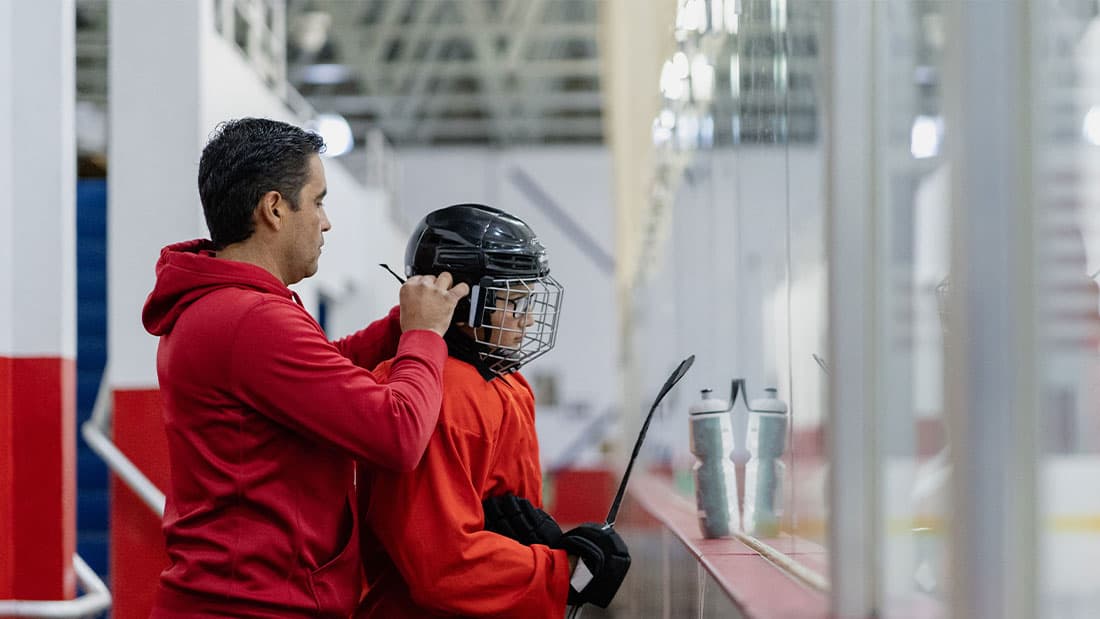Tips on How to Train in a Leg Cast or Boot
Normally when I meet a new client, their goals are to maximize performance and ultimately reduce the risk of injury through training. I recently met a new client who had a season-ending injury and was wondering what he could do while in a cast after surgery.
Training around injuries, aches and pains is pretty common, but training while in a restrictive piece of medical equipment is rarely discussed.
This particular client suffered a broken foot that ended his basketball season early. It’s been four months since we began training together and I’ve had some time to reflect on the process, so I wanted to share some of this to potentially help others who may be in a similar situation one day.
Unfortunately, injuries are inevitable. They are part of contact sports. And they suck. Training properly definitely has its benefits in the reduction of non-contact injury risk, but sometimes the bad luck can rear its ugly head even for the highest-trained athletes.
Two things are vital to coming back from an injury: preparation and mindset. Rushing back from an injury is one of the worst things an athlete can do. Recovery is not 100 percent physical. Not being mentally ready to train or play can be just as bad as not being physically prepared.
I go back to this famous quote from tennis legend Arthur Ashe: “Start where you are. Use what you have. Do what you can.” In this case, if you’re in a cast, you have plenty to work with.
Medical Info
I am NOT a doctor or a physical therapist. This is not medical advice. It is very important, before returning to any kind of physical activity, to get the proper approval from your medical team. Anyone involved in the medical side of your operation and recovery must clear you for additional activities outside of their prescribed methods.
Once you get the go-ahead, let the training begin. Depending on your injury, whether you’re in a cast or a boot, or whether or not you had surgery, this timeline may differ.
It’s important to move cautiously to avoid complications of possibly re-injuring yourself or putting yourself in unsafe situations. There may be coaches, fans, friends or family rushing you back. Don’t listen. Move at your timeline. Work with your professional advisors. Keep YOUR body the No.1 priority here.
Training Tips
Although everyone’s timeline and situation will be different, eventually there will be a phase of returning to training while you’re still in a cast or boot. This is simply a guide to some methods that may work for you and help you begin to build up capacity while you recover.
The obvious place to start is with the region of your body that is not injured. After all, you’re in a leg cast, not a full body cast. Let’s get some upper body work in!
Even training the upper body while you’re in a cast or boot will have some limitations. It’s a good idea to limit exercises where leg drive is needed. Your leg drive and overall involvement is going to be a limiting factor for the lift, but also could add stress to the lower extremities when we don’t necessarily need or want that.
For example, if you decide to use a Bench Press variation, try to elevate your feet on the bench so you don’t have to worry about what’s happening at the feet. This will limit your Bench Press, but it’s only being used to preserve your injured leg and you can return to normal form once you get clearance or confidence to put some load into that leg.
Another example would be a Landmine Press. Go to a tall or half-kneeling position (if you can) instead of a split or regular stance. This will limit the weight bearing volume on your injured leg but allows you to still get work in.
Some key upper-body exercises while lifting with a cast or a boot are:
Floor Press or Feet-Up Press Variations
DB Rows & variations
Half or Tall-Kneeling Landmine Press
Isolation Exercises like Curls, Skullcrushers, Lateral Raises, etc.
Battle Ropes
All of these are great examples of upper-body lifts you should be able to do with zero issues. The loads and rep ranges you choose are kind of up to you and what your personal situation is, however, I am a big fan of using the 1×20 system or other high-rep ranges during this time of recovery.
This gives you a chance to focus on technique, build up your capacity and set yourself up for a smooth transition into more advanced training when the cast comes off.
When it comes to lower-body and core-focused training, things can get much more particular. While the upper body definitely gives you more freedom, the lower body can get tedious and very limited.
Since you’re in a cast or boot, most traditional compound movements like Squats and Deadlifts are going to disappear for a while. Stimulus is the name of the game here. You don’t want to leg your legs atrophy any more than they naturally already will.
Here are some extremely low-impact leg exercises you can try:
Band TKE’s
Leg Raises
Leg Extension (machine or band)
Leg Curls (machine or band)
Tall-Kneeling Good Mornings
Other Notables:
- Glute-Ham Raises
- Isometric Quad Contractions
- Manual Resistance Leg Curls, Extensions, Ad/Abductions
- Band Resisted Clamshells
- Again, I like the idea of higher rep ranges here. It’s going to be extremely difficult to “lift heavy” under these circumstances, so you can use this as an opportunity to fine-tune some things and get a lot of volume in while doing it.
- Think of these two things during this phase of training—structure and capacity. Your goal is to build both of these. Structure could be working on postural imbalances, slight increases in muscle mass and just general adaptation of whatever level of strength you can get. Capacity would include energy system capacity and development, recovery efforts and overall preparedness for training and eventually sports.
- You’re in a boot or a cast, which means about a third of your leg is not ready for use. This leaves A LOT of other capable muscles that can be trained. Focus on what you can do, rather than dwelling on what you can’t do.
Photo Credit: Thamerpic/iStock
READ MORE:
RECOMMENDED FOR YOU
MOST POPULAR
Tips on How to Train in a Leg Cast or Boot
Normally when I meet a new client, their goals are to maximize performance and ultimately reduce the risk of injury through training. I recently met a new client who had a season-ending injury and was wondering what he could do while in a cast after surgery.
Training around injuries, aches and pains is pretty common, but training while in a restrictive piece of medical equipment is rarely discussed.
This particular client suffered a broken foot that ended his basketball season early. It’s been four months since we began training together and I’ve had some time to reflect on the process, so I wanted to share some of this to potentially help others who may be in a similar situation one day.
Unfortunately, injuries are inevitable. They are part of contact sports. And they suck. Training properly definitely has its benefits in the reduction of non-contact injury risk, but sometimes the bad luck can rear its ugly head even for the highest-trained athletes.
Two things are vital to coming back from an injury: preparation and mindset. Rushing back from an injury is one of the worst things an athlete can do. Recovery is not 100 percent physical. Not being mentally ready to train or play can be just as bad as not being physically prepared.
I go back to this famous quote from tennis legend Arthur Ashe: “Start where you are. Use what you have. Do what you can.” In this case, if you’re in a cast, you have plenty to work with.
Medical Info
I am NOT a doctor or a physical therapist. This is not medical advice. It is very important, before returning to any kind of physical activity, to get the proper approval from your medical team. Anyone involved in the medical side of your operation and recovery must clear you for additional activities outside of their prescribed methods.
Once you get the go-ahead, let the training begin. Depending on your injury, whether you’re in a cast or a boot, or whether or not you had surgery, this timeline may differ.
It’s important to move cautiously to avoid complications of possibly re-injuring yourself or putting yourself in unsafe situations. There may be coaches, fans, friends or family rushing you back. Don’t listen. Move at your timeline. Work with your professional advisors. Keep YOUR body the No.1 priority here.
Training Tips
Although everyone’s timeline and situation will be different, eventually there will be a phase of returning to training while you’re still in a cast or boot. This is simply a guide to some methods that may work for you and help you begin to build up capacity while you recover.
The obvious place to start is with the region of your body that is not injured. After all, you’re in a leg cast, not a full body cast. Let’s get some upper body work in!
Even training the upper body while you’re in a cast or boot will have some limitations. It’s a good idea to limit exercises where leg drive is needed. Your leg drive and overall involvement is going to be a limiting factor for the lift, but also could add stress to the lower extremities when we don’t necessarily need or want that.
For example, if you decide to use a Bench Press variation, try to elevate your feet on the bench so you don’t have to worry about what’s happening at the feet. This will limit your Bench Press, but it’s only being used to preserve your injured leg and you can return to normal form once you get clearance or confidence to put some load into that leg.
Another example would be a Landmine Press. Go to a tall or half-kneeling position (if you can) instead of a split or regular stance. This will limit the weight bearing volume on your injured leg but allows you to still get work in.
Some key upper-body exercises while lifting with a cast or a boot are:
Floor Press or Feet-Up Press Variations
DB Rows & variations
Half or Tall-Kneeling Landmine Press
Isolation Exercises like Curls, Skullcrushers, Lateral Raises, etc.
Battle Ropes
All of these are great examples of upper-body lifts you should be able to do with zero issues. The loads and rep ranges you choose are kind of up to you and what your personal situation is, however, I am a big fan of using the 1×20 system or other high-rep ranges during this time of recovery.
This gives you a chance to focus on technique, build up your capacity and set yourself up for a smooth transition into more advanced training when the cast comes off.
When it comes to lower-body and core-focused training, things can get much more particular. While the upper body definitely gives you more freedom, the lower body can get tedious and very limited.
Since you’re in a cast or boot, most traditional compound movements like Squats and Deadlifts are going to disappear for a while. Stimulus is the name of the game here. You don’t want to leg your legs atrophy any more than they naturally already will.
Here are some extremely low-impact leg exercises you can try:
Band TKE’s
Leg Raises
Leg Extension (machine or band)
Leg Curls (machine or band)
Tall-Kneeling Good Mornings
Other Notables:
- Glute-Ham Raises
- Isometric Quad Contractions
- Manual Resistance Leg Curls, Extensions, Ad/Abductions
- Band Resisted Clamshells
- Again, I like the idea of higher rep ranges here. It’s going to be extremely difficult to “lift heavy” under these circumstances, so you can use this as an opportunity to fine-tune some things and get a lot of volume in while doing it.
- Think of these two things during this phase of training—structure and capacity. Your goal is to build both of these. Structure could be working on postural imbalances, slight increases in muscle mass and just general adaptation of whatever level of strength you can get. Capacity would include energy system capacity and development, recovery efforts and overall preparedness for training and eventually sports.
- You’re in a boot or a cast, which means about a third of your leg is not ready for use. This leaves A LOT of other capable muscles that can be trained. Focus on what you can do, rather than dwelling on what you can’t do.
Photo Credit: Thamerpic/iStock
READ MORE:











